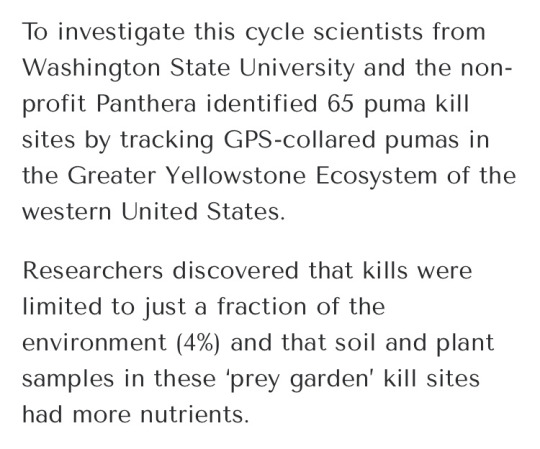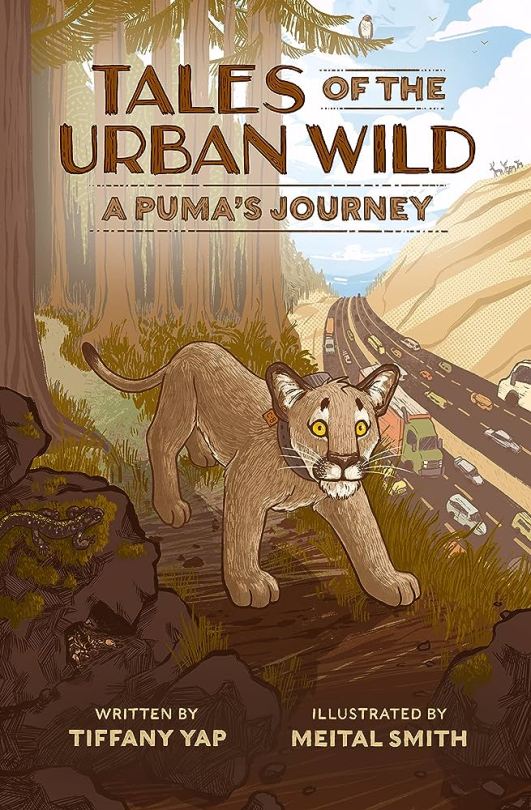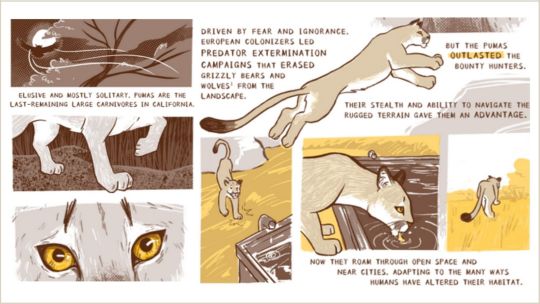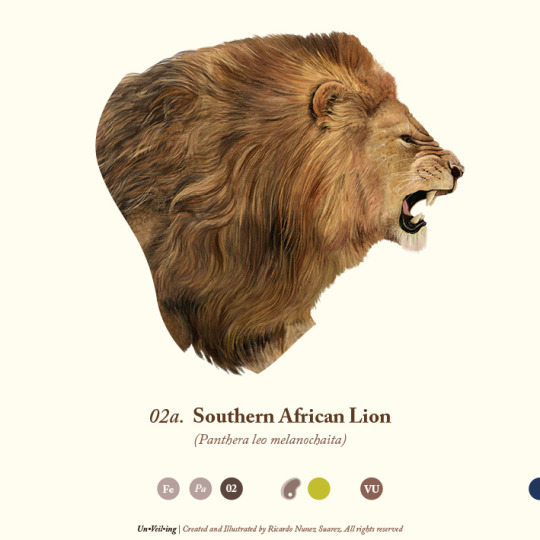#lion conservation
Text
It’s World Lion Day!
So let’s talk about the second largest cat in the world!!

[Image description: A close up image of a lioness looking at the camera.]
(Image from Smithsonian)
Basic Stats
These huge cats grow to lengths of 2.7 meters (9ft) (females) and 3 meters (10ft) (males). They weigh up to 179 kg (395 lbs) (females) and 250 kg (55 lbs) (males).
Most lions live on the open savanna although they also have habitats in dry forests. Many live in Africa but there are Asiatic lions who make their homes in India.
In zoos, lions may live on into their early 20s. In the wild, lionesses can live up to 16 years but it is rare that a male will live past 12 years of age.
Prides and Social Structure
Lions are the most social felines in the world, residing in big family groups called prides. In Kruger National Park, there lives one of the largest prides in Africa, 26 lions-strong!
Prides are made up of related females. There may be as many as 40 individuals (adults, sub-adults, and cubs) including one or more resident males. The more prey available, the larger these families grow.
Lionesses will typically remain in their mothers’ prides for life so long as food scarcity does not drive them out. Young males are forced to leave at around 2-4 years of age (when they are capable enough to compete with dominant males.) These wanderers will create coalitions, commonly with brothers and cousins, and search for a pride to take over.
The first order of business during a take over is to kill all cubs from the previous male’s lineage. The males do not want to expend energy ensuring that another lion’s genes will be passed on. Another reason for infanticide is that female lions will not be receptive to mating while they are nursing a litter so killing the cubs enables procreation of the new bloodline. You can read more about infanticide by male and female lions (yes, there are cases where even a mother will kill her own child for evolutionary advantage/survival) here.
Males take up the defensive roles in the pride while females focus on hunting. Both lions and lionesses mark their territories by roaring and scent marking with urine.
Hunting Tactics
Lions have smaller hearts and lungs that are not built for running fast; they reach a maximum speed of 80 kph (50 mph) that they can only maintain for short bursts. This means that lions rely on ambush, camouflage, and tactics. They do their best work hunting as a team and going by the cover of darkness at night.
When they hunt, lions target the weak and sick--the slowest of the herd. They will circle the herd from different angles, splitting the group so they can get an animal alone.
Take a look at this video to get an insight on how these big cats hunt together. Bear in mind that it is older (2011) so it looks a bit tacky, but the information is great!
Bite-sized Facts!
A lion may eat 34 kg (75 lbs) of meat at once.
When cubs are about 5 weeks old, they leave the den and start learning how to hunt.
Lions sleep and rest about 20 hours a day, mainly during the hottest points of the day.
A lion’s roar can be heard up to 8 km (5 mi) away.
Without their coats, lion and tiger bodies are so similar that it takes an expert to tell them apart.
Lions primarily eat large animals that weigh from 45 to 453 kg (100-1,000 lbs)
Lions steal kills from hyenas, leopards, and other predators.
Conservation Status, Efforts, and What You Can Do!
Lions’ conservation status is vulnerable so we need to work hard to protect them from extinction! They are the top predators in their environment which means they play a crucial role in maintaining a healthy balance of population among animals. This balance even effects the wellbeing of the grasslands and forests themselves!
If you want to help monetarily, you can donate to African Parks. They focus on reintroduction of lions into habitats where they went locally extinct and increasing the lions’ range. They remove snares, fence parks for the animals’ safety, and monitor the wildlife to prevent poaching.
You can also donate to Big Cat Rescue directly to save not only lions but other big cats!
Now let’s talk about what we can do in our every day lives to help!
Never purchase any souvenirs or products made from lion parts!
Use social media as a platform to reach others and inform them about why conservation is important!
Shop Amazon Smile for Big Cat Rescue and help their cause at no cost to you each time you make an amazon purchase (their site has instructions on how to utilize this amazing conservation tool!)
To help all the wildlife, and the planet, recycle, buy in bulk, try composting, and minimize your carbon footprint. You can also look into ecobricking!
Explore!
Here are some videos and documentaries that will allow you to learn more about lions (or just see some awesome moments!) This list includes a documentary from Curiosity Stream which requires a subscription (absolutely worth it if you love animals and nature), but everything else is free to watch! I have viewed all of these myself and believe them to be accurate and of good quality. Not to mention I had a blast watching them. So kick back with some snacks and watch these big cats!
1. Lions 101 - Nat Geo Wild
2. The Secret Lives of Big Cats - Curiosity Stream
3. Lion Fatally Cripples Hyena
4. Hyena Attacks Lion & Pays the Price
sources (if not otherwise linked in this post):
-Smithsonian's National Zoo & Conservation Biology Institute
-Amazing Animals: Lions by Valerie Bodden
#lions#world lion day#lioness#animals#lion deep dive#animal deep dive#autistic special interest#animal special interest#big cats#wildlife#animal facts#animal conservation#lion conservation#nature#big cat rescue#african parks
6 notes
·
View notes
Text




the mountain lions are unwittingly practicing witchcraft to improve their hunting chances and leaving patches of terra preta behind
21K notes
·
View notes
Text
Learn about these amazing creatures, the world's second-largest cats. Explore their habitat, behaviours, and impact on the environment. Discover amazing information about lions.
#Lions#Interesting facts on Lions#animal kingdom#facts about animal kingdom#Second-Largest Cats#Big Cats#King of the Jungle#Lion Facts#Lion Behavior#Lion Habitat#Lion Characteristics#Lion Conservation#Lion Wildlife#Lion Population#The Junior Age
0 notes
Text

I have a lion! Support conservation at fahlo!
0 notes
Text
"There are now more golden lion tamarins bounding between branches in the Brazilian rainforest than at any time since efforts to save the species started in the 1970s, a new survey reveals.
Once on the brink of extinction, with only about 200 animals in the wild, the population has rebounded to around 4,800, according to a study released Tuesday by the Brazilian science and conservation nonprofit Golden Lion Tamarin Association.
“We are celebrating, but always keeping one eye on other threats, because life’s not easy,” said the nonprofit’s president, Luís Paulo Ferraz.
Golden lion tamarins are small monkeys with long tails and copper-colored fur that live in family groups led by a mated pair. Usually, they give birth annually to twins, which all family members help to raise by bringing them food and carrying them on their backs.
The monkeys, which live only in Brazil’s Atlantic Forest, are still considered endangered.
The population survey was conducted over roughly a year. Researchers went to specific locations and checked whether monkeys responded to recordings of the tamarins’ long call, which basically means “I’m here. Are you there?” said James Dietz, a biologist and vice president of the U.S.-based nonprofit Save the Golden Lion Tamarin.
The new population figures are notable because the species had experienced a sharp decline from a yellow fever outbreak. In 2019, there were 2,500 monkeys, down from 3,700 in a 2014 survey.
Scientists intervened by vaccinating more than 370 monkeys against yellow fever, using shots adapted from a formula for humans — a fairly novel approach for conservation.
Scientists “cannot pinpoint a single exact cause for the recovery,” but believe several factors may be at play, said Carlos R. Ruiz-Miranda, a State University of Northern Rio de Janeiro biologist who advised on the population study.
Firstly, the yellow fever outbreak has subsided, perhaps due to a combination of the virus’ natural cycle and the vaccination campaign.
The animals may also be benefiting from an increase in forest habitat, said Dietz, who is also a research associate at the Smithsonian Institution’s Conservation Biology Institute. Between 2014 and 2022, the amount of connected forest habitat increased 16%, mostly through forests regrown on converted cattle pasture, he said.
Currently about three dozen farmers and ranchers in the Atlantic Forest region participate in such reforestation programs.
“It makes me so happy to see the tamarins playing free on my farm. They don’t only live in protected areas,” said Ayrton Violento, a farmer and entrepreneur in the small city of Silva Jardim. His family’s Fazenda dos Cordeiros has planted native fruit trees and also manages a tree nursery for native Atlantic Forest seedlings to plant on other farms.
“Recently, every year I see more tamarin families, more frequently,” he said."
-via AP News, August 1, 2023
#conservation#biodiversity#endangered species#monkeys#golden lion tamarin#atlantic forest#brazil#reforestation#endangered animals#yellow fever#good news#hope#hope posting
378 notes
·
View notes
Text

i can’t stand in this lit hallway anymore i want to be liked!!!
#lions#gouache#my art#animal art#this is abt impostor syndrome and also gender and also nature and conservation
309 notes
·
View notes
Text
Animal of the Day!
Lion’s Mane Jellyfish (Cyanea capillata)

(Photo from South Shore Health)
Conservation Status- Unlisted
Habitat- Arctic Ocean; Northern Pacific Ocean
Size (Weight/Length)- 200 cm; 30 m tentacles
Diet- Small fish; Other jellyfish; Fish eggs
Cool Facts- The lion’s mane jellyfish is the largest jellyfish hands down. Fully grown lion’s mane aren’t threatened by much outside of climate change. Staying close to the surface of the waves, these giant jellies drift with the current to travel massive distances on their constant search for food. Being solitary reduces competition and allows them to grow to their huge size. Their 30 meter (or longer) stinging tentacles drift behind them and reel in any prey that’s unfortunate enough to get tangled up. The lion’s mane jellyfish’s venom isn’t strong enough to kill a human, but it can certainly cause pain and panic which can lead to drowning.
Rating- 11/10 (Huge, orange, what’s not to love?)
#Animal of the day#Animals#Jellyfish#Marine creatures#Tuesday#February 7#Lion's mane jellyfish#biology#science#conservation#the more you know
401 notes
·
View notes
Text
With their bladed paws, wielded by a rippling mass of pure muscle, sharp eyes, agile reflexes, and crushing fanged jaws, lions are certainly not a predator most animals have any interest in messing with. Especially seeing as they also have the smarts to hunt in packs.
"Lions are the biggest group-hunting land predator on the planet, and thus ought to be the scariest," conservation biologist Michael Clinchy from Western University in Canada said in 2023.
Continue Reading.
52 notes
·
View notes
Text
#good news#science#environmentalism#environment#nature#animals#conservation#san diego#california#sea lions#marine life#sea life#usa
77 notes
·
View notes
Text


Tales of the Urban Wild:
A Puma’s Journey follows the lone brother, who local scientists tag as C-8, as he navigates what humans have done to the landscape.
Drawing from meticulous research, conservation scientist Tiffany Yap weaves together many diverse animal and human stories, celebrating the beauty and wonder of ecology, interconnectivity, and representation. With artist Meital Smith’s spectacular illustrations in the rich golds and earth tones of central California, this debut graphic novel inspires and teaches us what it means to share and protect this earth together.
Tales of the Urban Wild: A Puma’s Journey – Pre-order Today! — Tiffany Yap & Meital Smith
#graphic novel#comics#puma#cougar#mountain lion#california#north america#USA#conservation#animals#nature#mammal#art#illustration#books
68 notes
·
View notes
Text

The first dark-maned lion I ever saw. Boy did he stir up something magical in my soul.
#nature#wildlife#animals#wildlifephotography#africa#conservation#naturephotography#animallovers#safari#lions#big cats#photography#magic#outdoors
77 notes
·
View notes
Text

Amboseli National Park, Kenya, June 7, 2022
71 notes
·
View notes
Text

Southern African Lion
Panthera leo melanochaita
Family: Felidae
Genus: Panthera
Conservation Status: Vulnerable
Before 2016, approximately a dozen subspecies of lions were officially recognized. However, after conducting more thorough assessments and further studies, scientists ultimately concluded that there are only two distinct subspecies. One is the South African Lion, which is the focus of this post, and the other is the Asiatic Lion, which also encompasses the lions residing in the western and northern regions of Africa.
_______________________________________
Thank you for passing by. Please consider joining the club where you can find more detailed information about every post here along with the book that is in the making and have access to the collectible E-Stickers. Just click here
See you next week. Follows, likes, and reblogs help a lot. Let's make animals famous so we can take care of them. Cheers!
#lion#southern African lion#leon#big cat#cute cats#love cats#wild cats#illustration#drawing#scientific illustration#illo#wild animals#wildlife#artist on tumblr#animals#mammals#animal#conservation#inforgraphics
34 notes
·
View notes
Text
Aquarium of the Pacific
489 notes
·
View notes
Text
Today is a very special #Caturday because it's also SaveTheFloridaPantherDay!

The offical state animal of Florida, this Cougar subspecies (Puma concolor coryi/cougar) is listed as Endangered with only ~200 left (up from a low of ~20 in the 1970s).

"Florida Panther" 26-cent stamp, USA, 2007, w/art by Nancy Stahl. USPS
#cougar#mountain lion#panther#Florida Panther#state animal#endangered species#conservation#animal holiday#postage stamp#stamps#philately#American art#graphic design#Nancy Stahl#USPS#Caturday#cat#cats in art#animals in art
78 notes
·
View notes
Text
Animal of the Day!
Steller Sea Lion (Eumetopias jubatus)

(Photo from NOAA)
Conservation Status- Near Threatened
Habitat- Northern Pacific Ocean
Size (Weight/Length)- 1000 kg; 3 m
Diet- Fish; Mollusks
Cool Facts- Being the largest eared seal, the Steller sea lion is a sight to behold. Spending most of their time hunting off the coast or in brackish rivers, Steller sea lions can take down animals as big as white sturgeon and other species of seal. These sea lions are so big that most species of shark ignore adults and only large pods of orca can take down a full grown male. While hunting, Steller sea lions can hold their breaths for up to 20 minutes and dive to over 400 meters. Seen as a threat to fish targeted by fishermen, sea lions were purposely targeted by humans. Their population has fallen by 80% since the 1970s, but recent protections have resulted in a skyrocketing population. In 2013, the Steller sea lion was officially taken off the U.S. Endangered Species List although bans on hunting remain.
Rating- 13/10 (Despite the name, sea lions are not cats.)
#Animal of the day#Animals#Mammals#Marine animals#Seals#Sea lion#Wednesday#January 25#Steller sea lion#biology#science#conservation#the more you know
178 notes
·
View notes